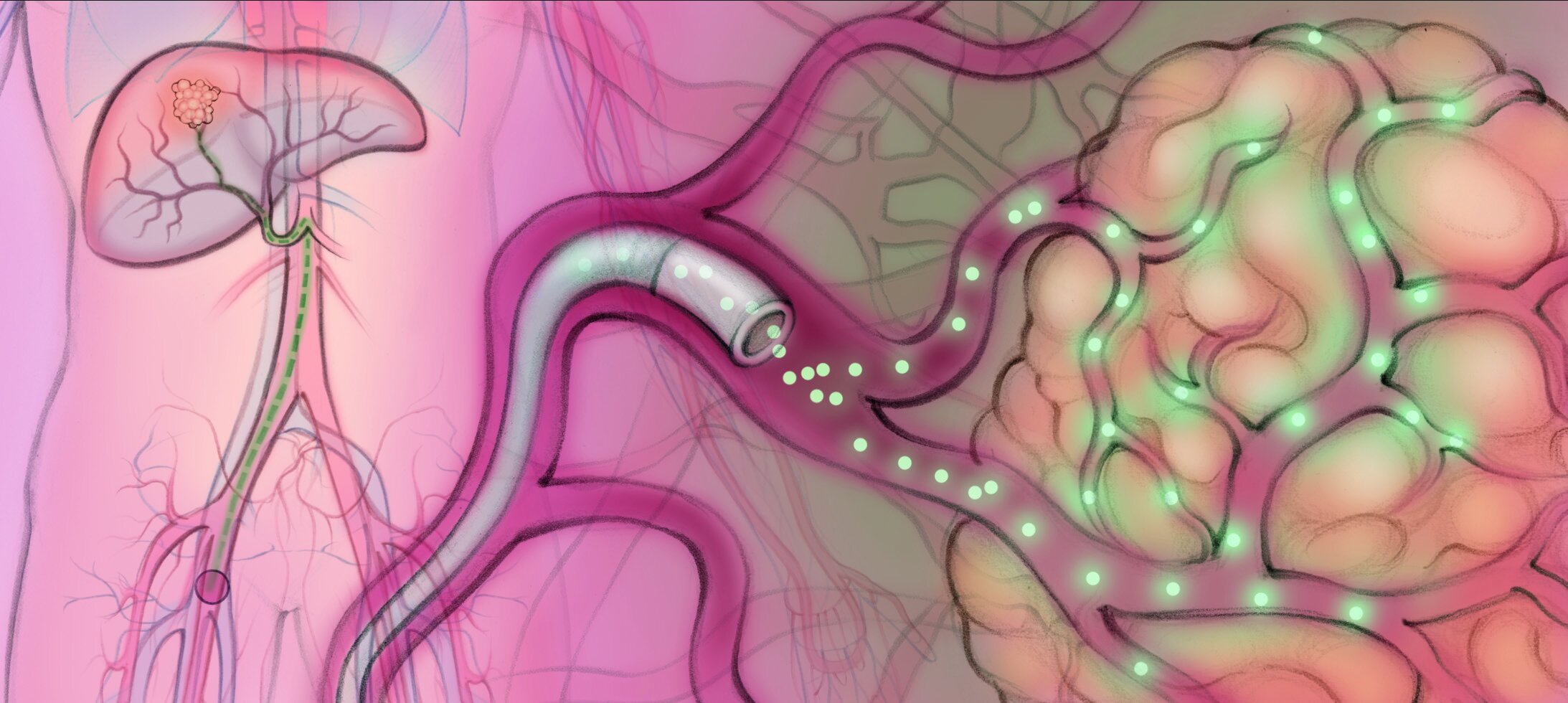What is TARE?
TransArterial RadioEmbolization (“TARE”) is a minimally invasive treatment for liver cancer. It is also called radioembolization. It is done by a specialist using moving x-rays for guidance. It is not surgery. The procedure involves threading a small tube into the blood vessels feeding the tumor(s) and injecting radioactive beads. The beads deliver high doses of radiation to the tumor, killing it over time.
How is TARE done?
TARE requires two separate procedures. The first procedure is like a test run. First, the clinician maps out your liver’s blood supply to see what is feeding the tumor(s). Then they inject a test substance to see if it goes to the lungs or other organs that could be hurt by the radiation. The second procedure is the actual treatment. The clinician injects the radioactive beads into the vessels feeding the tumor(s).
TARE in the Liver
1. After numbing the skin, a small tube is placed into the blood vessel at the top of the thigh (shown) or wrist.
2. Using x-ray guidance, the clinician steers the small tube to the blood vessel in the liver that feeds the tumor.
3. Tiny radioactive beads are injected directly into the blood vessels that feed the tumor. The tumor dies over days to weeks.
What are the risks?
TARE is generally a safe procedure when done by a specialist.
Major complications occur in 2 in 100 cases. These include liver failure, infection, lung or stomach damage, or injury to the blood vessels.
Minor complications occur in 1 in 5 cases. These include bleeding and temporary kidney injury, abdominal pain, fever, and/or nausea.
What are the alternatives?
Your treatment options depend on your preferences and unique conditions. These include your overall health as well as the size, location and number of tumors that you have. Sometimes you may benefit from a combination of these treatments.
Alternative 1 No treatment. The disadvantage of this is that the cancer may continue to grow.
Alternative 2 TACE is a similar minimally invasive, image-guided procedure where the beads deliver chemotherapy instead of radiation.
Alternative 3 Ablation is another minimally invasive, image-guided procedure to destroy the tumor with a wand placed through the skin.
Alternative 4 Surgery to cut the tumor out or to replace your liver with a transplant.
Alternative 5 Radiation therapy is a series of treatments to destroy the tumor with radiation beams delivered from the outside.
Alternative 6 Medicines to treat the cancer or help the immune system fight the cancer.




